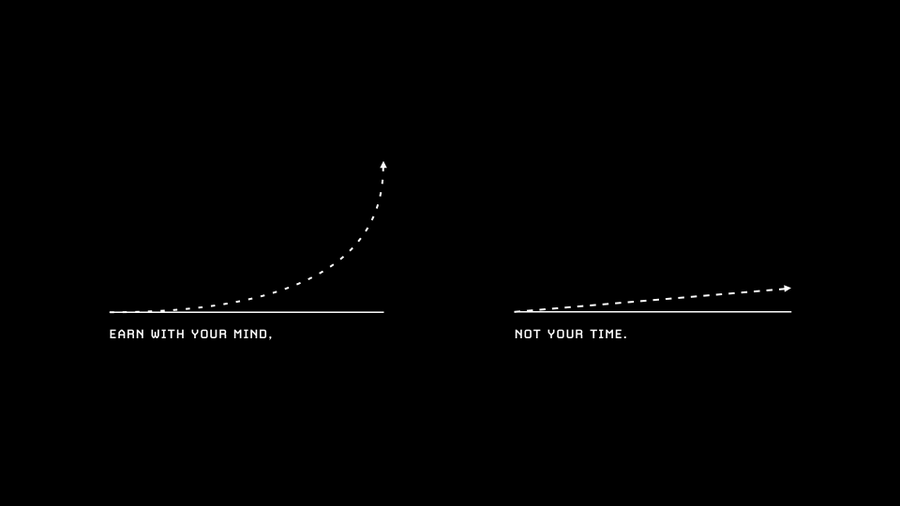The 4 Steps to Financial Freedom

Building financial freedom starts today.
A lot of the content surrounding becoming financially free is either a get rich quick scheme or focuses on making massive amounts of money. That’s not this post.
When I talk about financial freedom, I am talking about having enough.
Enough to live the life you want to live.
That’s going to look different for everyone, and it’s important to define for yourself. It’s human nature to always want more. Without setting guardrails on what enough looks like to you, you will never have financial freedom.
Advice like “invest,” “build career capital,” and (god forbid) “sign up for my free course!” is overdone. Today, I’ll be talking about the habits the minimalist entrepreneur should develop to set themselves up for financial freedom.
The Most Valuable (and Overlooked) Resource
The most overlooked resource in college and our early career is time. For many of us, college is a period of four years in which we aren’t expected to work on the premise that we will later be building wealth. With this comes a lot of freedom. In other words, it's the time to take risks.
No startup is built overnight. It’s an iterated process of learning, reflecting, and building. These habits will get you on your way to creating value.
Because that’s the secret to it all: if you want to own your time, don’t rent your time. Build something. Sell something.
The Problem Journal
Among the habits that I stick to, one has stood out as the driver of my progress: writing down problems.
Every day, I open up the Problem Journal on my Notion and record a problem — then I rank it on five key metrics from Y Combinator.
- Is it popular (i.e., many people experience it)?
- Is it growing?
- Is it urgent?
- Is it unavoidable?
- Is it frequent?
The key to creating value is finding the right problem to solve. You’re going to come up against difficulties in your life. But instead of complaining, take a step back and ask yourself: how could I build something so that this problem is no longer a problem?
Ryan Holiday describes how to find opportunity in difficulties:
We can’t change the obstacles themselves—that part of the equation is set—but the power of perspective can change how the obstacles appear.
When you force yourself to write down a problem every day, you start seeing the opportunity in all your obstacles. Soon enough, you’ll have plenty of problems — not to complain about, but to solve.
Solve a Problem Every Week
Now that you have a list of problems, now’s the time to think about solutions.
For a while, I’ve been using Valentin Perez’s creativity template to consider multiple perspectives on how to get at a problem. It’s incredibly useful and only takes about half an hour to fully flesh out a sprouting idea.
There’s another key part to solving problems, though. You have to know if you’re actually solving the problem. The next step? Build a minimum viable product (MVP) every week.
It will probably suck. But that doesn’t matter. At this point, you’ll have completed the three most important parts of creating wealth: finding problems, thinking of solutions, and building those solutions.
My Medium page is what I’d consider a repeated success of these three steps. Each week, I come across new problems and findings that I think will help people. So, I write about them. Even if I don’t think my ideas are amazing, I share them. And here’s the awesome part: I get feedback. I see what people like and I revise how and what I write about.
The MVP is the crux — when you go from an abstract idea to a real product. A product that provides value.
Meet New People, Find New Problems
Once you’ve built an MVP, there are two possible new directions:
- Get feedback, see if the problem’s worth sticking with, and build
- Restart the process and find new problems
Feedback is necessary. A great product solves big problems. How do you get your product to solve problems? You test it.
Share your MVP with people you know. See how they like it. Incorporate their advice into the product. Keep iterating.
Eventually, you’ll have to decide: is this project worth it?
At this point, it’s time to take a step back. Consider what you want to get out of building a product, what you’re trying to optimize for, and how much energy and time you would have to put into it.
If you need some help, I’ve written about when to quit and when to stick it out.
Even if you choose to fully build the product, it’s good to keep your eye out for new problems. At this point, it all goes back to step one. And the best way to find new problems? Meet new people. Work to understand who they are and what problems they face.
The Infinite Game
This strategy isn’t for the faint of heart. Each week, you’ll be dedicating significant time to your entrepreneurial goals. But creating value isn’t a one-time game. It’s a game we play throughout our lives — working to improve the world and help people flourish.
Great products are built by putting in the work every day. And soon enough, you’ll find a way to create enough value to lead life you love.